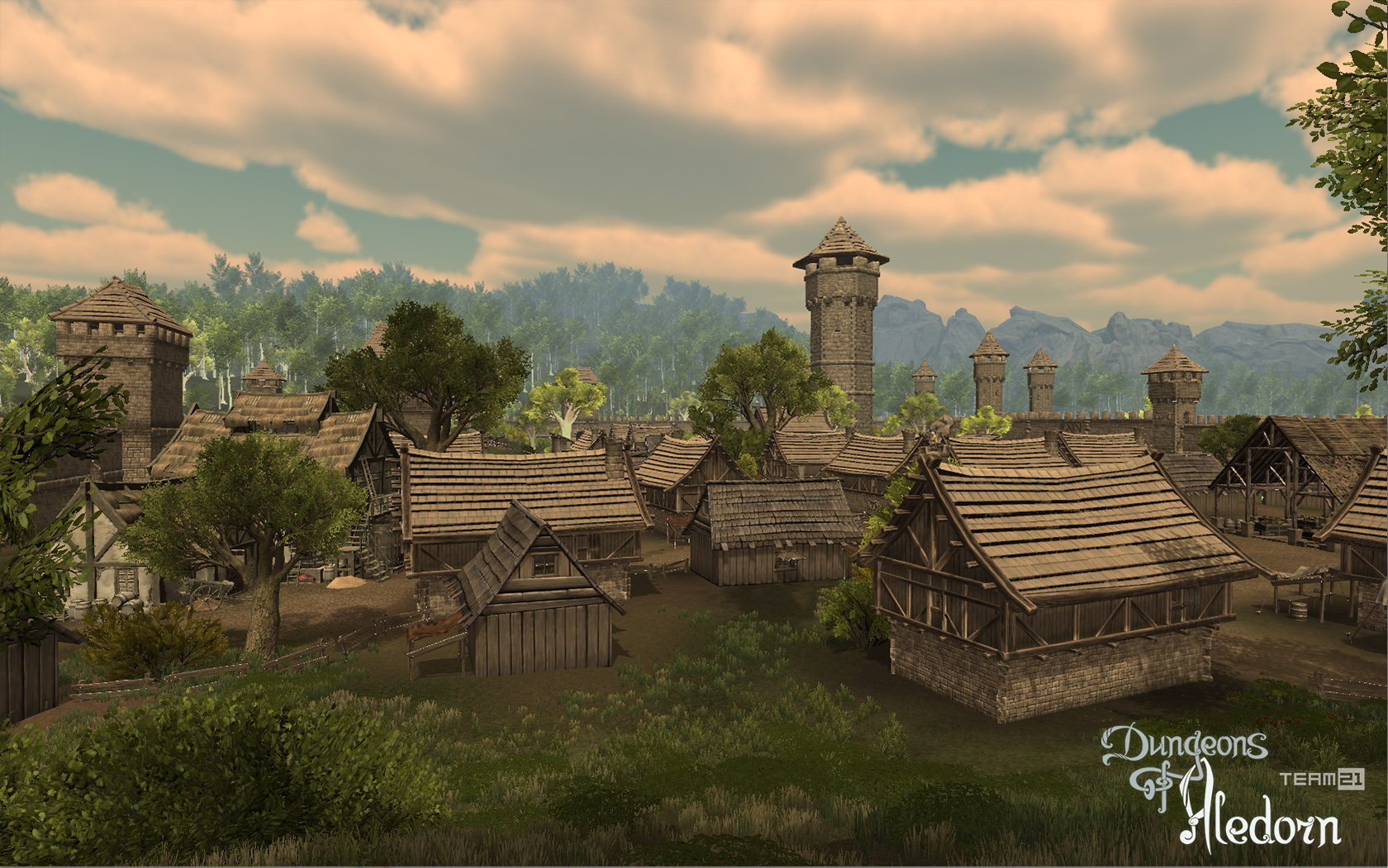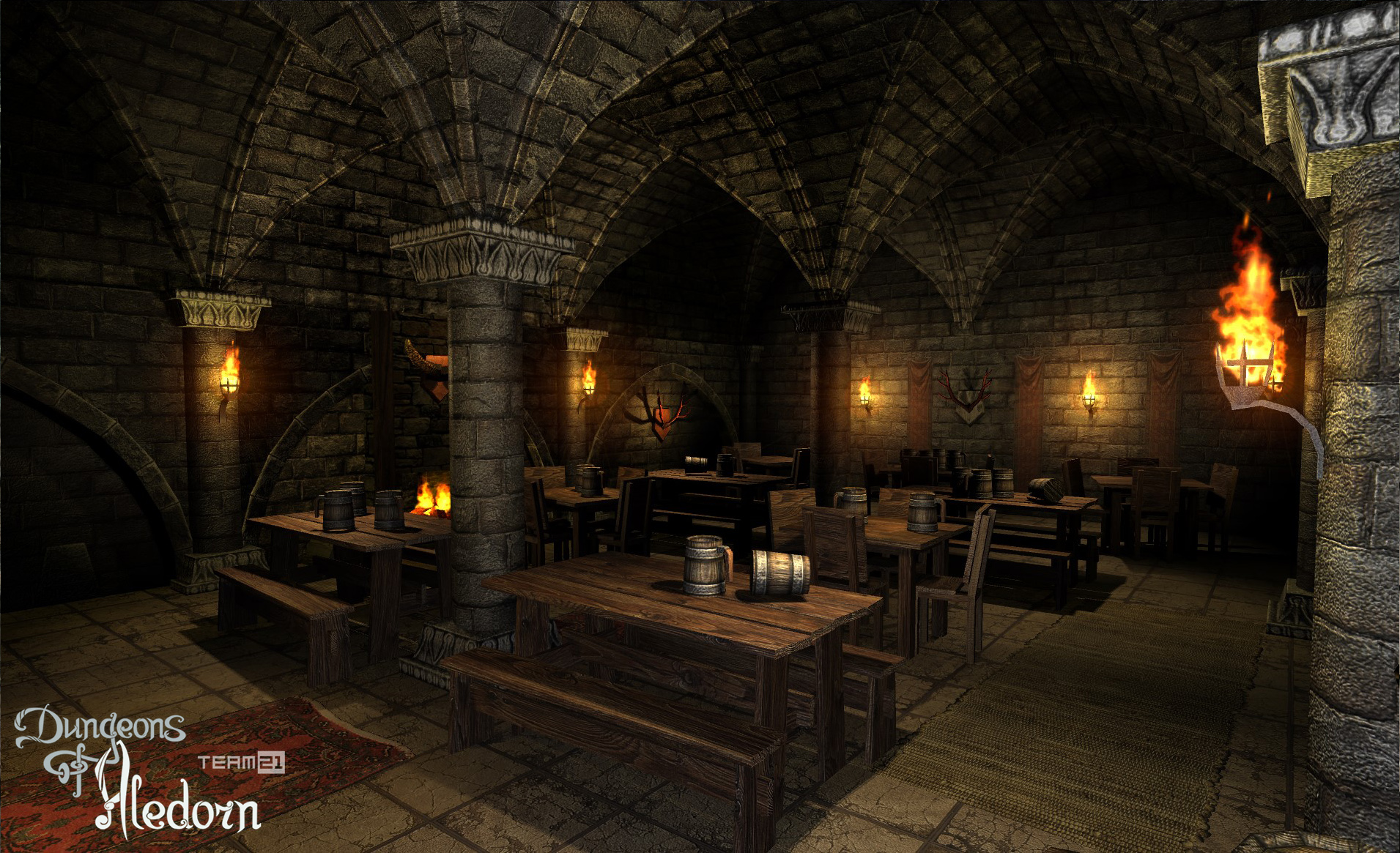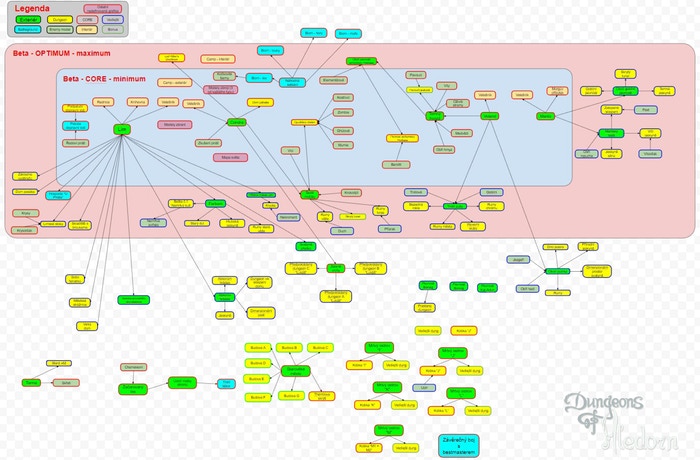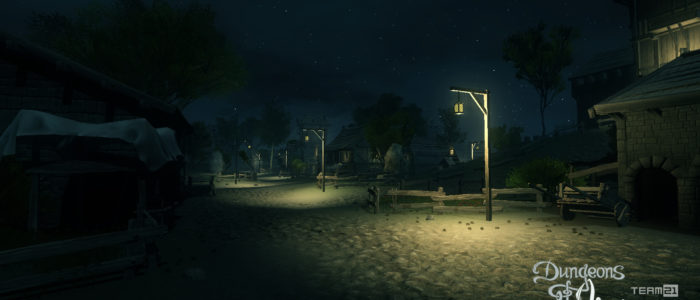What was (not) done after the alpha version.
After Alpha release the development slowed down. Important thing for the project was that we started to work on locations that already had first version, so we had to do a lot of optimization and debugging, as locations we had so far were half-baked. They looked well enough, but were full of bugs and also needed a lot of polish.
Major problem we were facing was an utter chaos in asset database – there was no index, assets were not sorted, there were multiple copies of the same items, etc. Building scenes from this chaos was possible but lengthy, revision was needed, but was pushed to a later date time and again.
After Alpha trouble started to brew in the team, there were more and more arguments with our chief graphic designer Daniel Nezmar. Dan didnt have time to focus on development and everything was getting more and more delayed. That was the first moment when both myself and Arbiter were starting to consider quitting the team. Nevertheless we started to push on Dan and after a while he started to do his part again and thus for example first version of second largest city – Voland.

Fig 1 – Voland City – first version
At that moment we had all cities – without the capital – ready. To some degree. Problem was that these locations needed a lot of bug catching and optimization. At the same time there was a steady stream of other locations coming from Dan – dungeons, interiors, etc. In a random order, but steady enough to keep us somewhat happy.

Fig 2 – Dungeon – abandoned temple
Lot of progress was done on internal editor (UniEditor) and at the same time we were developing new level editor as well. These two tools were interconnected, one using data from another. Thanks to that I could place containers accross locations and edit them. Also it allowed us to place NPCs and add dialogues to them. Elements essencial for finishing the game development.
Further feature we got thanks to our editors, was the ability to create fields with randomly generated herbs and other gatherable plants. Everything was based on probabilities that we could set in editors. I have to point out all the hard work that had been done for level and game design.
Other graphic elements were coming up nicely as well. Jarda – our junior graphic designer – created a working day-night cycle, that changed the lightning of locations based on time of the day. This function added a great deal of realism to the game.Jarda also started to work on a script that helped to a much easier terrain creation than the vanilla Unity editor allows.
Game design did progress as well. We managed to produce seventh version of the skill tree. Current iteration of skillset is based on this, we have basic skills that can be improved, thus unlocking perks which in turn improve existing skills or giving them further focus.

Fig 3 – Skills
After some time and bit of pushing Dan started to work on the capital. His first version looked well at first glance, but a lot of bugfixing and optimization was needed. As a matter of fact it needed so much work that we started to contemplate a different approach. Do a multitude of smaller locations instead of a massive one.

Fig 4 – Lim – first version of capital
Summer 2017 came and with it another crisis. The whole team started to push Daniel to prepare and sign a contract that we didnt have. Theoretically most of the team was in limbo – working in free time, with no share in the company, no guaranteed income, etc. We even hired a lawyer to prepare one for us, with participation of the team. In the end we had a version with which we all were satisfied – all except of Dan.
Unfortunately Daniel decided to boycott the effort. He came out with a myriad of reasons why this cant be there and that wont work, then he took time off, his lawyer got sick, etc., etc. We decided to leave Team 21. Yet – I still dont quite know how – he managed to persuade us to stay. Main reason probably was the fact that we hired a project manager who helped a lot with the structure of development. Thanks to him we got second wind and Daniel managed to sidetrack the contract discussion.
The project manager changed a lot in all areas of development. He created a new – more realistic – road map for Beta, that was divided into three parts. First, smallest and most important one was CORE – locations and elements without which the wor couldnt work. Second one was labeled OPTIMAL – the more we manage to squeeze in from this bucket will make Beta more interesting. The third bucket was basically the rest of the game, features planned for the final release, not intended for Beta, but we wanted to catalogue it for future nevertheless.

Fig 5 – Beta roadmap
Finishing what was on the roadmap was another important milestone. Unfortunately we came nowhere close to it. But that is for a different blog.
![]()
